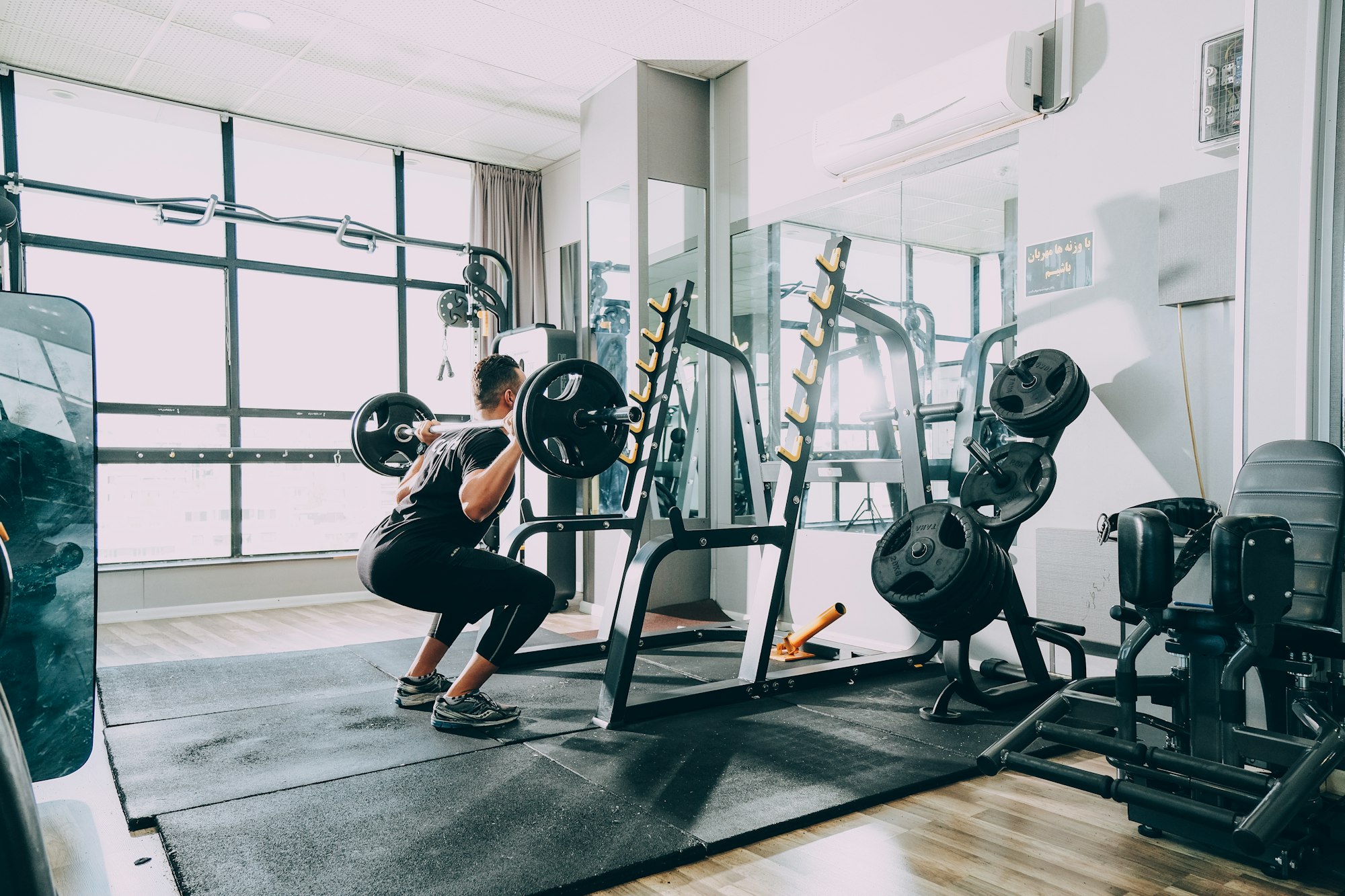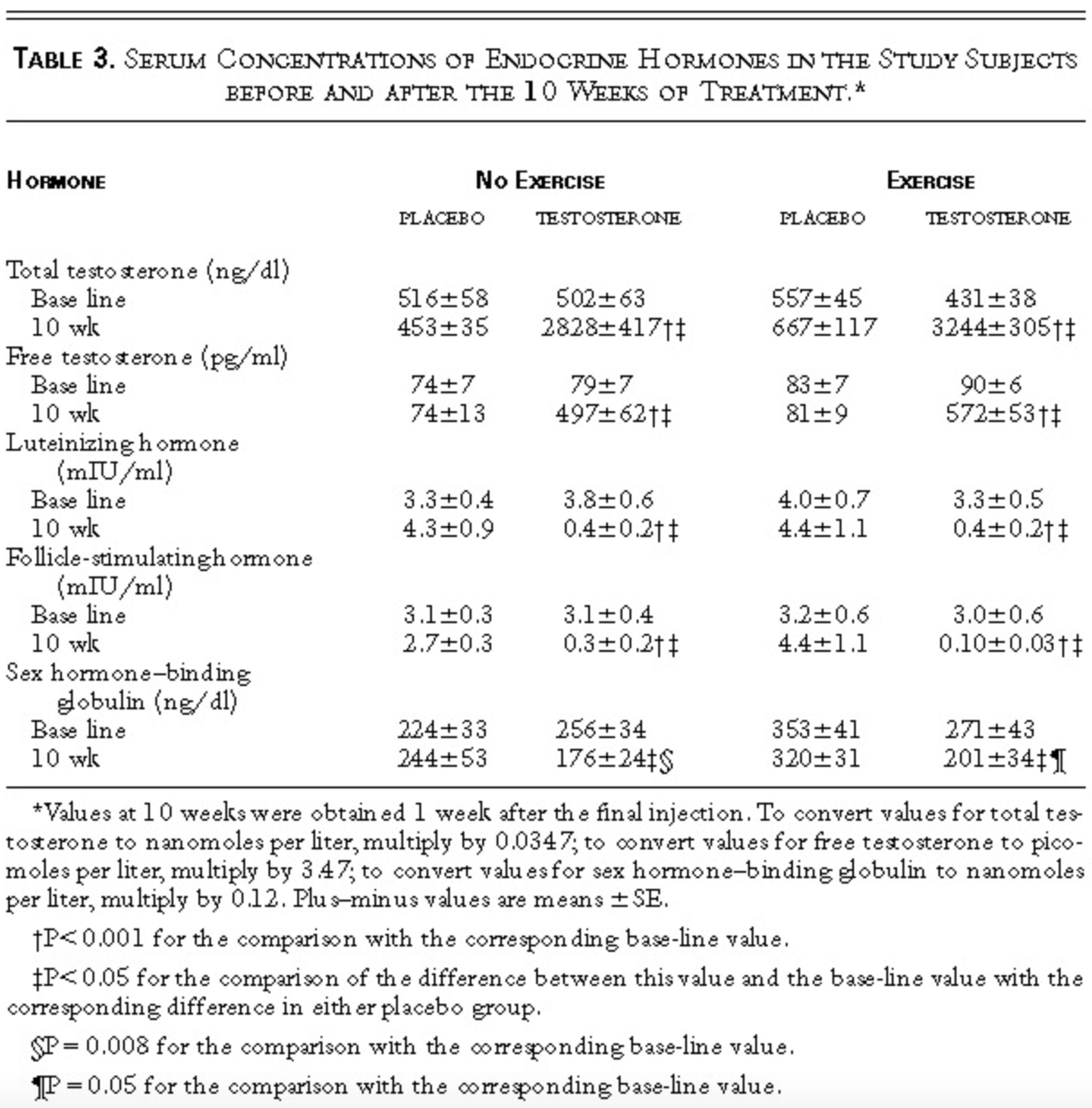Anabolic Steroids & Muscle Growth
Performance enhancing drugs (PEDs) have become very popular and easy to find for anyone with internet access and a mailing address. Let's dive into a popular study on testosterone use.

Performance enhancing drugs (PEDs) have become very popular and easy to find for anyone with internet access and a mailing address. PEDs is a very broad category that can include a variety of different drug classes such as selective androgen receptor modulators (SARMS), human growth hormone (HGH), erythropoietin (EPO), peptides, diuretics, and more. One such drug class would be anabolic steroids, most notably, testosterone. Like PEDs, the term "steroid" is very inclusive and technically refers to any molecule containing the well know 4-ring carbon structure you've seen in your medicinal chemistry classes (or your nightmares). These rings are typically named A-D, and there are a number of hormones with this structure, including testosterone.

When most people hear that someone is taking steroids, they don't think about cortisone or prednisolone. Rather, they think about "anabolic" steroids, which are meant to cause anabolism or molecular synthesis. In other words, anabolics make things grow. In this case, anabolic steroids like testosterone can cause supraphysiologic muscle growth in humans, which is the topic of this week's article.
Let's dive into one of the most referenced publications on anabolic steroids and muscle growth in men published by Bhasin et al. in the New England Journal of Medicine in 1996. It's a fascinating study that successfully portrays the insane results possible with these drugs. Having said that, there are a wide variety of severe side effects associated with steroids, and they're nothing to scoff at. For instance, steroid abuse can cause hypertension, heart attack, stroke, liver damage, acne, depression, male-pattern baldness, and more. You should not take steroids unless it's through a physician for an FDA-approved indication, which would be for men who lack or have low testosterone levels in conjunction with an associated medical condition.
In this study, there were 43 men split into 4 groups: placebo with no exercise, testosterone with no exercise, placebo plus exercise, and testosterone plus exercise. The dose of testosterone in this study was 600mg every week for 10 weeks. For comparison, current testosterone recommended dosages are 50-400mg every 2-4 weeks for FDA-approved indications. The men in this study were taking much more than that, however, 600mg per week is still a dose considered low to moderate by professional bodybuilders.
Strength and muscle mass were measured in this study using exercise capability and MRI, respectively. The men in this study were in their late 20s and had baseline body weights of ≈175 lbs. As for muscle growth, both fat-free mass and size of the triceps and quadriceps were measured. We'll focus on fat-free mass for an idea of total muscle mass gained rather than focusing on specific muscle groups. The average lean-mass gains for each group are listed below, per MRI scan:
- Placebo with no exercise: 1.76 lbs
- Testosterone with no exercise: 7.04 lbs
- Placebo plus exercise: 4.4 lbs
- Testosterone plus exercise: 13.42 lbs
These are pretty insane results. Without any external stimulus (exercise), testosterone use caused an average of ≈7 lbs of muscle gain in just 10 weeks. Add in exercise and the muscle gain is nearly doubled! In the exercise group, steroid use caused a 305% increase in muscle growth compared to the placebo group.

So, if steroids cause such massive gains in muscle mass, is there a corresponding increase in strength? The average increases in bench press and squat strength are listed for each group below:
- Placebo with no exercise: Bench: 0 lbs; Squat: 6.6 lbs
- Testosterone with no exercise: Bench: 19.8 lbs; Squat: 28.6 lbs
- Placebo plus exercise: Bench: 22 lbs; Squat: 55 lbs
- Testosterone plus exercise: Bench: 48.4 lbs; Squat: 83.6 lbs
As you can see, there were obvious strength increases in the "enhanced" arm. Notably, exercise without testosterone use resulted in strength increases that exceeded the testosterone with no exercise group. Simply taking testosterone without a stimulus does not cause results unachievable naturally.
Let's look at some of the blood work taken in this study:

Starting with the obvious, you can see that the testosterone group had much higher testosterone levels compared to placebo. To put those numbers into perspective, normal physiologic total testosterone levels range from 270 to 1,070 ng/dL in men (depending on age), and the enhanced arms in this study averaged 3x the upper limit of normal (ULN). This acts as confirmation that the study subjects were taking far more testosterone than a physician would typically prescribe.
Now let's talk about luteinizing hormone (LH) and follicle-stimulating hormone (FSH). As you can see, both LH and FSH drastically decreased from baseline in the testosterone groups. This makes a lot of sense considering the negative feedback loop caused by testosterone.

Seeing as the body has way more testosterone than it's used to, there's no need to stimulate the testes to create more. This is why testosterone use can cause testicular shrinkage.
The testosterone groups also had statistically significant decreases in sex hormone-binding globulin (SHBG), which is produced predominantly in the liver. Production of SHBG is dependent on a hormonal balance between testosterone, estrogen, insulin, and thyroid hormone. Drastically increasing testosterone will drive down SHBG production, and other studies have shown that this decrease is sustained for at least 16 weeks following discontinuation. This partially explains why women with polycystic ovary syndrome (PCOS) often have decreased SHBG due to testosterone levels above ULN.
Thoughts and Conclusions:
Steroids obviously work. Hands down, no doubt about it. Having said that, there's no good reason to abuse them for muscle growth. This study showed the shocking results possible with steroid use, but it also highlighted the extent of what's possible when training naturally. 10 weeks of steroid use was enough to throw 3 different biomarkers (FH, LH, and SHBG) completely out of whack. Not to mention, abusing these drugs can kill you.
The science is interesting, and the results of steroid abuse might even be entertaining given the inherent effects of PEDs. Certain sports are much more fun to watch when the athletes are enhanced. What American didn't enjoy the reign of Lance Armstrong at his peak? Who didn't enjoy home runs hit by Barry Bonds and Mark McGwire or Arnold Schwarzenegger as the Terminator? Still, the long-term and acute negative effects of PEDs heavily outweigh the benefits in my opinion, especially as it pertains to steroids and average Joes. The point of this article is not to convince you to use steroids, but I do hope that you found the information interesting. If the side effects of steroid abuse and other PEDs don't convince you to stay away, consider the message below:


